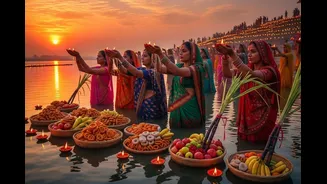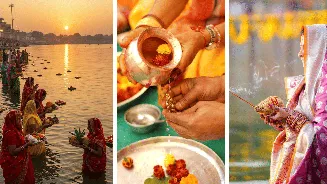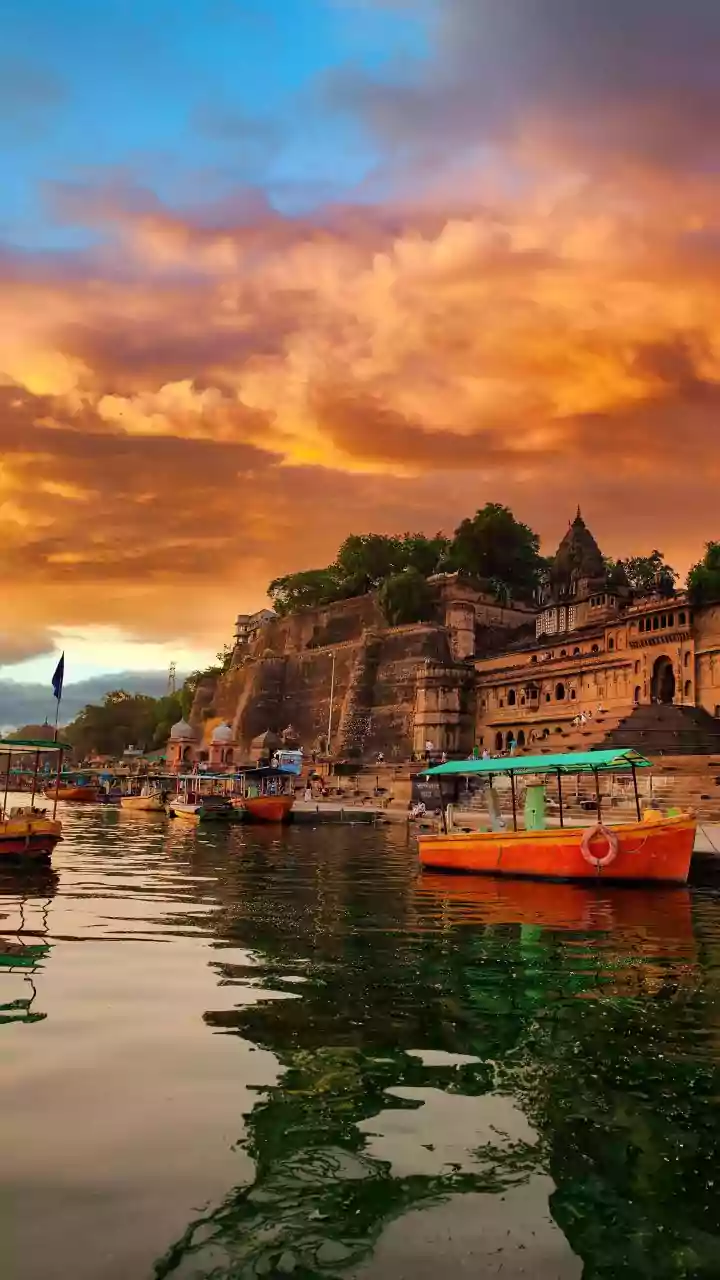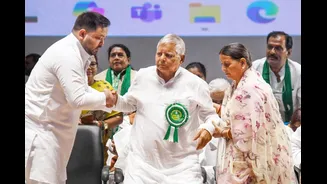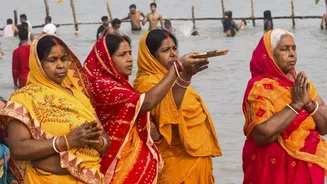About Chhath Puja
Chhath Puja is an ancient Hindu festival primarily observed in Bihar, Jharkhand, Uttar Pradesh, and Nepal. This auspicious festival is dedicated to the
Sun God, Surya, and his consort Usha, to thank them for bestowing the bounties of life on earth and to request them to grant certain wishes. The rituals during Chhath Puja are aimed at promoting well-being, prosperity, and the harmonious integration of communities. The festival is usually observed six days after Diwali, showcasing the deep cultural and religious traditions. It emphasizes purity, devotion, and abstention from food and water during the main puja days, in alignment with nature's rhythm. Devotees also seek blessings for the health and prosperity of their families and loved ones, marking a time of communal togetherness and individual spiritual upliftment. This festival symbolizes faith in nature and the perseverance to overcome the challenges in life.
The Four Day Festivities
Chhath Puja is a four-day festival filled with different rituals each day. The first day is 'Nahay Khay', marked by cleanliness and preparing food for the next few days. On the second day, 'Kharna', devotees observe a day-long fast and break it with 'kheer' and 'roti'. The third day, 'Chhath Puja', is dedicated to offering 'Arghya' (offerings) to the setting sun. The final day, 'Usha Arghya', involves offering Arghya to the rising sun, marking the end of the festival. Each day holds a specific set of rituals and significance, creating a continuous chain of devotion and spirituality. Throughout the four days, devotees engage in fasting, prayers, and acts of charity. The communal spirit is strong, as families and neighbors work together to set up ghats (riverbanks) and prepare offerings. These four days are a symbolic representation of the cycle of life, death, and rebirth, representing the connection of the devotees with the sun and their environment.
2025 Puja Dates
The Chhath Puja in 2025 will be held over four days, each carrying distinct importance and time. On October 25, 2025, the Nahay Khay will kick off the celebrations. The Kharna will be held on October 26, 2025. The most significant day, Chhath Puja, with Sandhaya Arghya (evening offerings), will be observed on October 27, 2025. Finally, the Usha Arghya (morning offerings) will be held on October 28, 2025, marking the end of the festival. Planning and preparation for the festival start well in advance, with devotees cleaning their homes and making arrangements for the celebrations. During the four days of the festival, specific rituals and traditions are followed, showing the faith and commitment of the devotees. These dates provide a clear schedule to help people plan their participation and prepare for the various rituals associated with Chhath Puja.
Arghya Significance
The 'Arghya' is a central part of Chhath Puja, consisting of offerings made to the Sun God. The significance is immense because it represents gratitude and the seeking of blessings from Surya. The Sandhaya Arghya, offered to the setting sun, and the Usha Arghya, offered to the rising sun, are important. The evening Arghya symbolizes honoring the sun as it sets, while the morning Arghya celebrates the beginning of a new day. Devotees offer water, milk, fruits, and other items while chanting hymns to the sun god. The rituals are performed on the riverbanks or other water bodies, emphasizing the connection between the devotees and nature. The offerings signify purity, devotion, and a prayer for well-being. By participating in these acts, devotees express reverence for Surya, seeking his grace and blessings for their family and community. The arghya symbolizes the cycle of life, reflecting the sun's journey through the day.
Key Rituals
Chhath Puja is steeped in several significant rituals. The initial stage of cleaning and purification, or 'Nahay Khay', is vital. The preparation of 'Prasad' and making offerings to the Sun God is also vital. Fasting during Kharna and during the main puja days is a spiritual discipline. As a ritual, devotees take holy dips in rivers or other water bodies, and the whole family gathers to make the offerings. Women typically observe the main fast. During the offering, devotees sing traditional Chhath songs. They seek blessings and offer prayers for the prosperity and health of their families. These rituals reinforce the community's bond while providing a framework for showing gratitude and reverence to the Sun God.


